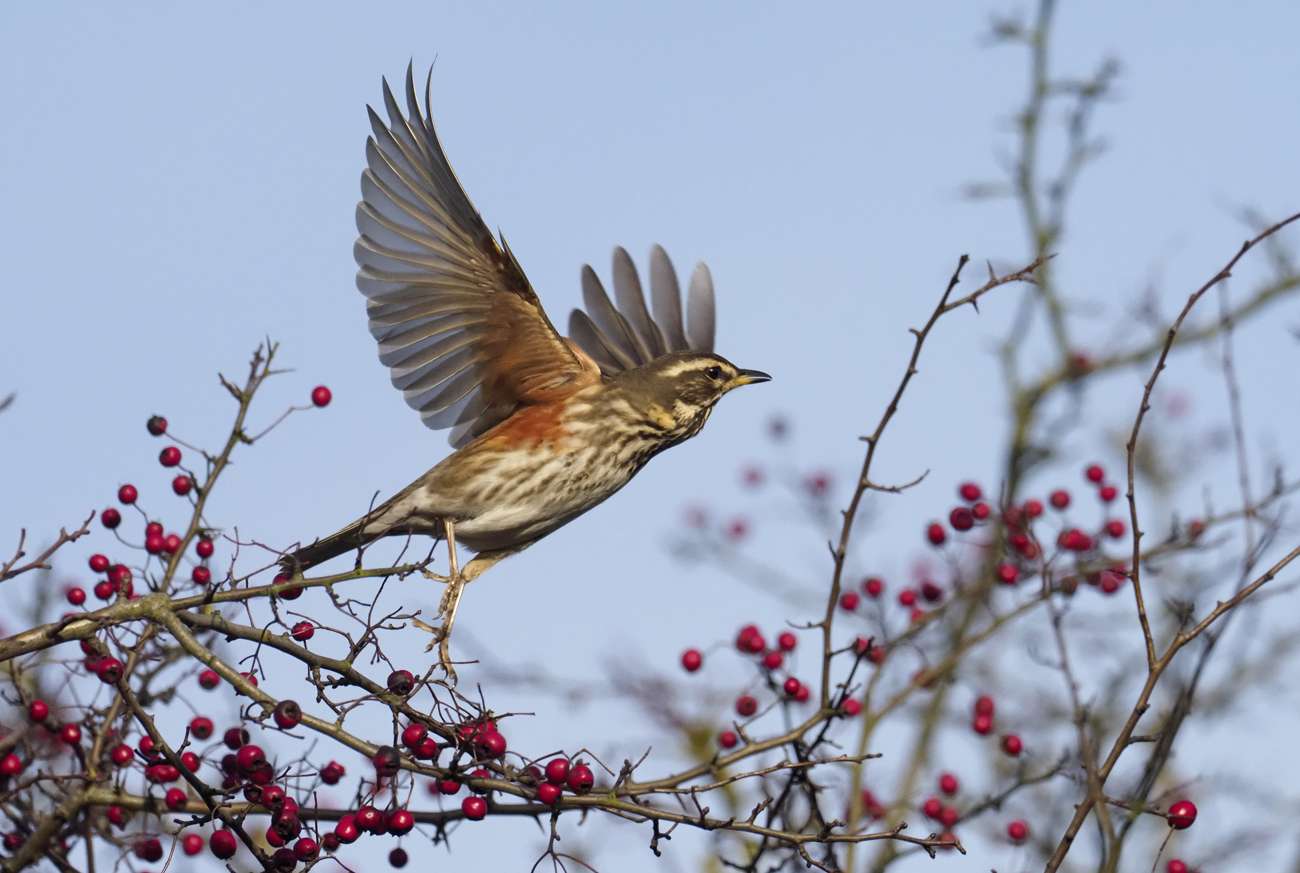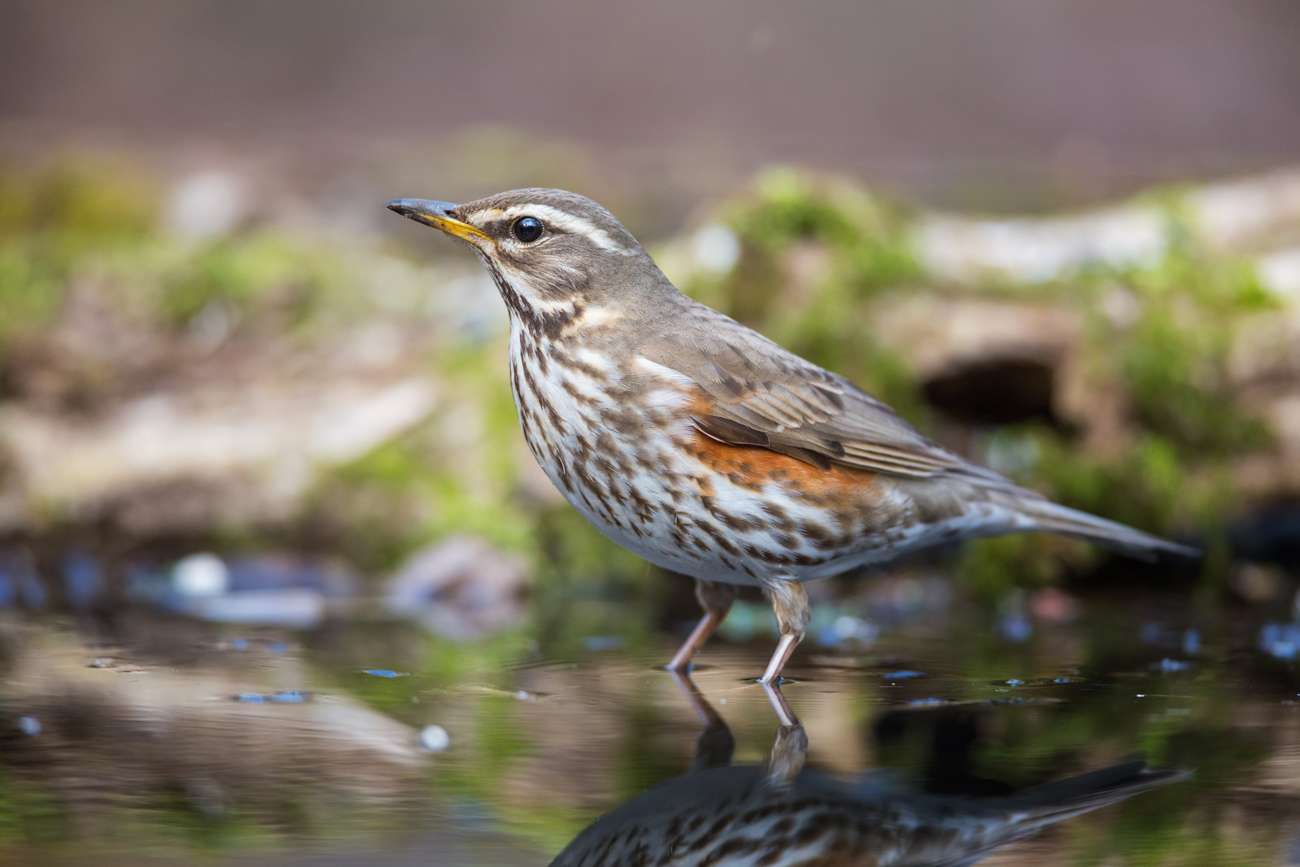
Redwing (Turdus iliacus)
The 25th of December seemed to be all around as the snow fell onto the twinkling lights and carols belted out from loudspeakers.
But despite the festivities it felt weird because Christmas was clearly not coming any time soon. Tomorrow would be the longest day of summer.
I was in Lapland’s Santa Claus Village, standing legs apart, posing for a photo with one foot in the Arctic Circle and the other outside it.
Earlier on the edge of quieter forest we had seen small Thrushes, called Redwings, singing for joy as they celebrated making the best of their freezing breeding season.
Smaller than a Song Thrush, they have brown upperparts and dark streaky spotting on their white breast and belly. There is a white stripe below the cheek as well as on the supercilium above and they are Santa-red on the flanks and along part of the leading edge of the underwing.
By Christmas they have enjoyed a very merry berry feast in our hedgerows and have moved on to our fields. In Crane-Spotter two autumns ago I wrote of a morning when a mate and I counted 1,475 moving mostly south-west over Leith Hill.
Little clouds of them came through the ‘Dorking Gap’ en route from Scandinavia across the North Sea.
I described the numbers then as amazing. Well, earlier this autumn that event was well and truly eclipsed with a day that has gone down in history and left friends and I in absolute awe.
While working as National Trust Surrey Hills volunteers around Leith Hill Tower we experienced three hours of migrant mayhem.
Obvious movement began soon after dawn as we became aware of a steady stream of Redwings arriving from the south-east and heading into the north-westerly breeze. On reaching the Surrey Hills they went west.
Unlike my previous big encounter it appeared weather conditions this time favoured crossing to England over The Channel rather than the North Sea. They had flown down through Holland and Belgium.

Redwing (Turdus iliacus)
The birds were taking over the air space above Covid-grounded aircraft at a ghostly Gatwick Airport. There were small flocks at first but gradually bigger ones followed. 30, 40, 50, another 60 . . . and soon we were seeing hundreds at a time.
Now I had to mostly abandon using my binoculars because, apart from the occasional lull in the procession, there was only enough time to record the numbers called out to me by my companions Wes Attridge and Mark Davis. It was a full-time job keeping up with it all.
Flocks grew larger until there was a steady stream and I was writing down 1,000+ at a time. There were so many Redwings it was fast proving impossible to log each one. Being careful not to double-count, we registered 20,000 in the first hour alone, and we started to wonder if we were on course for a national record.
Most of the birds we managed to count were easily visible because they were highlighted in a strip of sunlit orange sandwiched between two extensive sheets of grey cloud. And still the Redwings came.
After two hours we were up to over 29,000 and we finished our stint after just over three hours while stragglers were still coming through.
The final tally was an incredible 34,727. The figure beats the largest day numbers seen at famous migration hot-spots along the east coast.
It is the biggest UK visual migration (‘vis-mig’) count ever posted for this species on the international recording website Trektellen.
We later learned the huge Redwing activity in the south-east was widespread with other Surrey observers counting thousands each on that same morning.
And we rightly spared a thought for our friend Steve Gale who had spent a dozen previous mornings from dawn waiting for these annual visitors to arrive.
By himself he totalled what would have been a Surrey record – a remarkable 26,013 over his Banstead garden. The previous county best was 15,000.
Twitter – @Crane_Spotter
Click here to see all of Robin Stride’s previous Crane Spotters.











